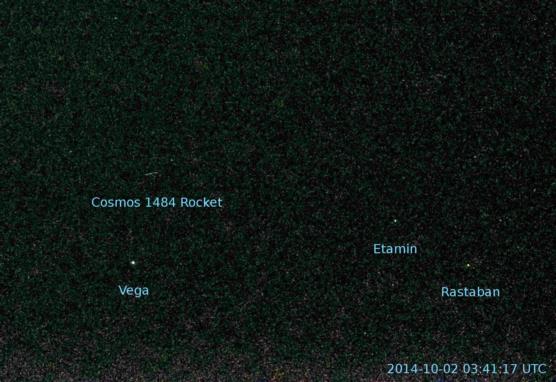
NavList:
A Community Devoted to the Preservation and Practice of Celestial Navigation and Other Methods of Traditional Wayfinding
From: Peter Monta
Date: 2014 Oct 2, 16:02 -0700
Recalling Norm Goldblatt's previous NavList message with an iPhone 5S picture of Ursa Major with the ISS, I figured it would be a good idea to try out some longer exposures with the phone taped to the top of a tripod.
Norm's photo was 1/15 second, ISO 2500; mine below are 1 second, ISO 500. Plate scale on the 4S is about 60 arcsec/pixel, so assuming we can do the astrometry to half a pixel, at 700 km range that's about 100 meters on the ground. According to heavens-above.com, about 15 of these ~mag 2.5 objects are available every morning and evening; assuming a reasonable mix of cross-track directions to reduce dilution of position, and good fresh orbits, one could hope for sub-100-meter navigation.
This has been discussed several times before on NavList, so there's nothing new here except the possible viability of using very small cellphone sensors with targets dimmer than ISS. Cellphone optics are not nearly as good as those of point-and-shoot cameras, but the phone is in your pocket, ready to go, and can do local processing.
Cheers,
Peter








